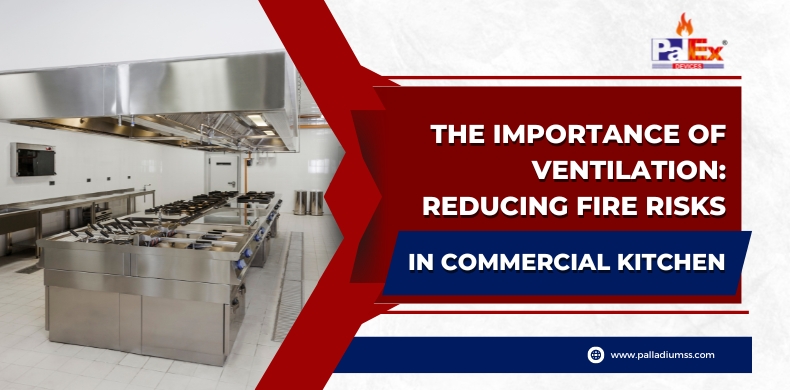Fires in commercial kitchens pose a grave danger to the restaurant business. They can completely destroy businesses, put lives at risk and cause expensive periods of inactivity. The key element for stopping these disasters is proper ventilation, which is crucial but often not given enough importance. In the blog, we will discuss why ventilation is very important to lessen fire dangers and what steps restaurant owners or managers need to take for keeping their kitchens safe, good at work and following rules.
The Role of Ventilation in Fire Prevention
Ventilation systems in the kitchen, when they are planned and kept correctly, work as your initial protection against fires. Their main job is to take away smoke, heat and byproducts of cooking from the kitchen. This is important because it prevents too much heat from gathering that might set off flammable things on fire, gets rid of grease-filled vapors which can change into fire dangers by condensing them while also helping improve air quality and visibility – lessening chances for accidents turning into fires.
Ventilation systems of today have advanced filters for grease, which catch oil and fat particles before they enter the ductwork. This is crucial because it decreases the quantity of flammable material within the ventilation system, makes cleaning and upkeep simpler, extends lifespan while reducing risk from duct fires.
Many ventilation systems in commercial kitchens are made to function with fire suppression systems. If a fire starts, the ventilation system assists in holding back the flames from spreading further and also triggers automatic measures for suppressing fires. It can stop fuel supply to appliances by closing off valves or other means, cutting off the fire’s source of fuel.
The Anatomy of an Effective Ventilation System
A good ventilation system needs to have certain main parts. The hood, which is the part you can see hanging over cooking appliances, must be of right size for catching all cooking vapors and smoke detectors . It should also be made from materials that resist fire and contain grease filters easy to remove when cleaning is needed.
The ducts move air and vapors from the hood to the outside. They need to be made from strong materials that resist fire, sealed correctly so no leaks occur, and have a design which makes it difficult for grease to build up by having few bends in them.
Airflow-producing devices, like exhaust fans, are responsible for eliminating contaminants. They must possess appropriate strength to handle the amount of air needed for your kitchen, have adjustable speeds according to cooking conditions and be maintained regularly so they function at their best.
The make-up air system is a part that often gets ignored. It brings in new air to replace the one taken out by the exhaust system. This role is important because it keeps correct air balance in kitchen, stops backdrafting (which can pull smoke and flames into dining area), and enhances efficiency of overall ventilation setup.
Also read : Kitchen Hood Fire Suppression System Inspection
The Cost of Neglect vs. The Value of Prevention
The expense of installing and keeping up a good ventilation system might be discouraging for some restaurant owners. When you think about the possible expenses from a fire in the kitchen, it could make putting in and keeping up high-quality ventilation more understandable.
Costs that might occur because of a kitchen fire include loss or damage to property and equipment, stoppage of business activities leading to lost revenue, being held responsible for injuries suffered by staff members or customers during the event; insurance rates going up as well as possible legal problems plus fines over code violations. When you see these costs, spending money on proper ventilation isn’t just about safety but also becomes a smart choice for your business.
Beyond Fire Prevention: Additional Benefits of Good Ventilation
Though the main emphasis is on fire prevention, a good ventilation system has many other advantages. It provides healthier conditions for your workers and lessens smells that might enter into the eating place. Newer systems can aid in lowering expenses for heating or cooling, and some even reuse heat elsewhere in the cooking area.
Proper ventilation helps your kitchen to not break local health and safety rules, avoiding fines or being closed down. It also improves the performance of the kitchen by making it less hot and damp, creating a better working environment. Good ventilation helps with seeing things clearly too – this might lessen accidents and enhance quality of food preparation in a good way.
Also read : Basics of Fire Detection System
Conclusion: A Breath of Fresh Air for Your Kitchen
In the serious world of business kitchens, one must not think later about fire prevention. A strong and properly taken care of ventilation system is not only a must by law – it’s an important expense for your safety, smooth-running and long life of the business.
Realizing the Significance of Ventilation, and Ensuring Correct Setup and Upkeep: You are not just bringing down possible chances for fires. You are making a workplace that is safer and more pleasant, guaranteeing your business follows rules, as well as possibly rescuing it from severe damages.

